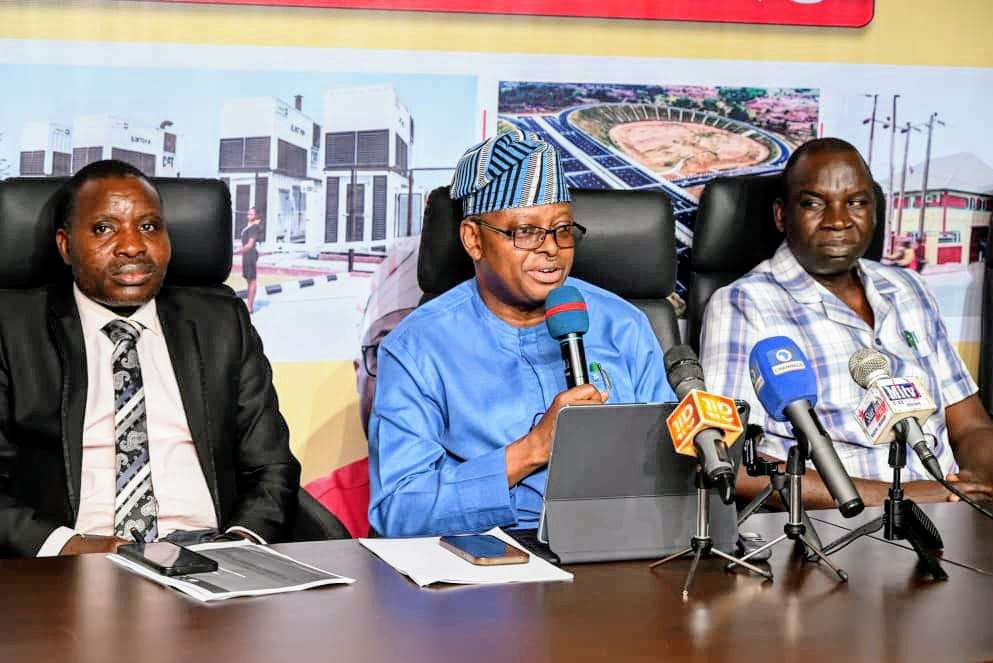

Oyo State government on Wednesday expressed it’s readiness to generate 500 megawatts of electricity before 2027 to address energy deficit and further improve the state’s economy.

The state’s Commissioner for Energy and Mineral Resources, Professor Dahud Shangodoyin , made this known while unveiling the roadmap and achievements of his Ministry during the ongoing Omituntun 2.0 Inter-Ministerial Press Briefing held at the Governor’s Office in Ibadan
According to him, the Makinde-led administration has positioned energy development as a core pillar of its economic transformation agenda.
“We are here to share the impact of the Ministry of Energy and Mineral Resources under Governor Makinde over the last two years. Our ministry, created in 2019, was tasked with achieving energy security and making Oyo a destination for energy investment,” he said.
Professor Shangodoyin highlighted key interventions such as the Oyo State Electricity Regulatory Law, Light-Up Oyo Project, Hybrid Independent Power Project (IPP), and solar-powered mini-grids deployed across the state as milestones that reflect the administration’s strategic planning.
In his words, “All our activities directly support the economy of Oyo State, as captured in Governor Makinde’s infrastructure revolution and documented in the Oyo State Roadmaps for Development. Our strategies include institutional reforms, private-public partnerships, and robust revenue models for sustainable energy.”
The commissioner emphasized the alignment of the ministry’s objectives with five Sustainable Development Goals (SDGs), including poverty reduction, clean energy, economic growth, infrastructure, and sustainable communities.
One of the flagship projects, the Light-up Oyo Project, which employs a Trybrid approach (gas, generator, and grid power), has recorded major progress, Sangodoyin said.
He said, “Under Omituntun 2.0, Phase II of the project spans 223.48 kilometers and is already 75 percent completed.”
He added that key routes within Ibadan, including Ojoo to Dugbe, Molete, Akobo, Beere, and Challenge, are now illuminated, significantly improving nightlife safety and economic activities.
He explained that the ministry has also deployed over 1,300 solar-powered streetlights across 50 markets, hospitals, parks, and public spaces.
He added that the government installed 30-metre-tall floodlights on Bridge 1 of the Senator Rashidi Ladoja Circular Road, the first of its kind in the South-West, with more underway at other major bridges.
Shangodoyin espoused Governor Makinde’s commitment to rural electrification through solar mini-grid installations saying projects have been completed in Ajia (Ona Ara LGA), Otefon (Atiba LGA), Agbaruru (Iwajowa LGA), and several other communities through Public-Private Partnerships (PPP).
He said: “We are using solar mini-grids to bring electricity to places long neglected. In Iwajowa alone, three communities have been powered; seven in Oriire, two in Itesiwaju, and one each in Surulere and Saki West.”
According to him, electric transformers have also been installed in underserved areas such as Aremo, New Bodija, Ilora Farm Settlement, and Air Force High School to improve voltage stability.
The Independent Power Project, launched in December 2024, has already delivered five megawatts, powering the State Secretariat with a mix of solar and gas energy. The second phase will add another six megawatts.
“We now sustain four megawatts of gas during the afternoon and 1 megawatt of solar in the evenings. We’re working with Elektron to distribute excess energy to nearby communities,” Sangodoyin stated.
Also, the state is advancing plans for a city-wide gas distribution network. Following the signing of an MoU with Shell Nigeria Gas, the former Commissioner for Works revealed that Oyo has approached the Nigerian Midstream and Downstream Petroleum Regulatory Authority (NMDPRA) for operational licensing.
As part of efforts to strengthen healthcare delivery, the state government has also provided solar power to 21 Primary Healthcare Centres (PHCs), enabling round-the-clock service delivery.
Shangodoyin also emphasized that the ministry has identified investment bottlenecks, technical deficits, and institutional weaknesses as key areas to address, aligning with the newly launched Legacy Compact for measurable performance across all ministries.
“We remain committed to removing barriers in the energy sector, enhancing donor engagement, and achieving the governor’s vision of a functional, secure, and economically vibrant Oyo State,” Sangodoyin concluded.
He however assured that the state government is not leaving any stone unturned to ensure that the legal framework that would enable private industry players with the financial muscle to come on board are put in place after concluding arrangements with relevant authorities.
This way, he said, government would play more roles of a regulator and allow the private sector players drive the energy sector in the state.








